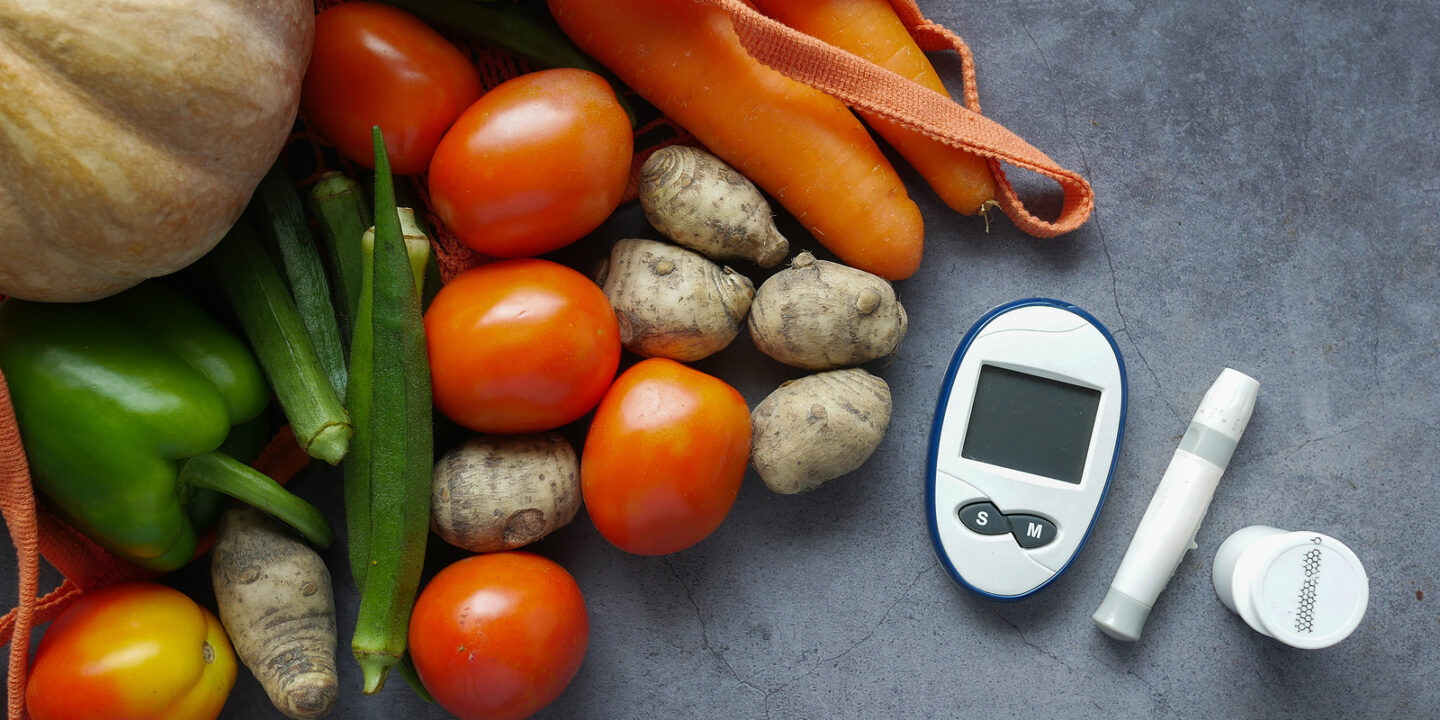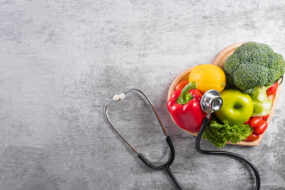
Table of Contents
What You Need to Know About a Diabetic Diet Plan
A diabetic diet plan is a strict regimen of food restrictions that is aimed at controlling blood glucose levels. Its goal is to limit the intake of foods with high calories per serving, as well as those that are unhealthy for overall health. In addition to that, it also entails strict adherence to nutrition labels on food packaging, and careful attention when dining out. Despite its success in controlling blood glucose levels, it's important to remember that the diet is designed for blood glucose control, not weight loss.
Carbohydrates
If you have diabetes, you need to watch your carbs carefully. Since you don't have enough insulin to regulate your blood sugar, carbohydrates are what cause your blood sugar levels to rise. By controlling your carbs, you can better control your blood sugar levels and keep it from rising too high. There are three types of carbohydrates that are all processed differently. Each type has its own digestive processes. You should monitor your blood sugar levels frequently and check them after meals to see which types of carbs are the most dangerous for your diabetes.
For type 1 diabetes, you need to know exactly how many grams of carbohydrates you eat at each meal. This way, you can match the amount of insulin you take to the number of carbs you eat. In case your blood sugar rises more than your target, you may have to take additional insulin. Type 2 diabetics also need to watch their carbohydrate intake to prevent spikes. Carbs should be eaten in moderation in small amounts throughout the day.
When choosing your carbohydrates, consider the fact that many foods with a high sugar content contain high amounts of fat. These foods should be avoided. They are not healthy and do not add much nutritional value. If you must eat sweets, you can try low-fat varieties. Low-fat sweets can be substituted for other types of carbohydrates. By knowing your carbs better, you can be confident that your blood sugar will stay within the appropriate range.
Another way to control your carb intake is to know the serving size of your foods. Ideally, you should aim to eat at least 200 grams of carbs per day. To help you track your carb intake, you can use the label of the product. Look for the “Total Carbohydrates” on the nutrition facts panel. Remember to check the serving size to stay within your meal budget. Fresh foods do not have this label, but their carb content is usually about 15 grams per serving. Vegetables, on the other hand, are not very high in carbohydrates. You can eat two or three servings of vegetables to get the same amount of carbs.
Protein
Depending on your personal preferences, you can include either animal or plant-based sources of protein in your diabetic diet plan. High-quality proteins are found in meat, poultry, seafood, and dairy products. Vegetarians can turn to nuts, soy-based tofu, and tofu. But you need to know that nuts are high in calories and fat. The American Heart Association recommends counting a small handful as a single serving.
It's a myth that eating too much sugar and fat will cause blood glucose levels to rise and cause diabetes. In fact, sugar and fat are unhealthy for people with diabetes, so cutting down on them is a good way to keep the blood glucose levels down. Eating too much of them can lead to complications and other health risks, including high cholesterol and other chronic diseases. You should also remember that extra calories and fat can cause your blood glucose to rise higher than normal.
Ideally, your protein intake should comprise 10% to 35% of your daily calories. Carbohydrates should comprise 45 percent of your diet, and fat represents the remaining 20%. Health experts recommend a ratio of two to three ounces of protein at each meal. This will help stabilize blood sugar levels and provide fullness. To calculate the recommended dietary allowance for protein, follow the National Academies of Science, Engineering, and Medicine's recommended daily allowance. For men, this means 68 grams per day, while for women, it's around 44 grams.
Eating more protein than carbohydrates can cause a serious problem. It's not uncommon for someone with diabetes to eat large meals with lots of carbohydrates and proteins, which can raise blood sugar levels to dangerous levels. To avoid this problem, it's essential to check your blood sugar levels regularly. Using a continuous glucose monitor is recommended. You should also avoid sugar-sweetened beverages, including soda. If you don't want to take the risk of gaining weight or developing diabetes, consult a registered dietitian.
Fat
Incorporating fat into a diabetic diet plan can help a diabetic keep his blood sugar levels in check. A diet rich in saturated fats, such as butter and margarine, can counteract a lower intake of carbohydrates. Instead of saturated fats, diabetics can replace them with monounsaturated fats or polyunsaturated fats. Diabetics usually consult a nutritionist to determine the right diet plan and to find out how many calories they need to consume every day. They should also understand carbohydrate counting principles.
The USDA MyPlate eating plan follows similar guidelines and focuses on fruits and vegetables, whole grains, lean proteins, and low-fat dairy. Foods in the lowest part of the pyramid should make up about half of a diabetic's daily food intake. They are also high in protein. However, diabetics should focus on eating more vegetables and fruit. Eating more fruits and whole grains will prevent blood sugar levels from skyrocketing.
Avoid processed foods, which are often high in sugar. Look for low-glycemic fruits and vegetables. Fruits are rich in fiber and low GI and are great for diabetics. If fresh fruit isn't an option, frozen fruit is another great choice. It contains only a small amount of sugar but still has plenty of nutrients. The sugar in fruit can also be replaced with fiber. A study of 500,000 Chinese adults found that eating fruits and vegetables three times a week significantly decreased the risk of diabetes. Apples, grapes, and kiwis are particularly low in sugar and high in fiber.
Although the importance of carbohydrates in diabetes management cannot be overstated, fat plays an important role in our bodies. It cushions organs, stores energy, and protects the body from the elements. It also supports cell growth. Moreover, when fat is consumed in moderation, it can reduce the risk of cardiovascular disease and certain cancers. However, the amount of saturated and trans fats that we consume should be moderated, as they are a source of trans and saturated fats.
Sodium
The intake of sodium in people with type 2 diabetes is extremely high. This is due to their increased risk for CVD and chronic kidney disease. These diseases are further exacerbated by superimposed hypertension, which is associated with increased dietary sodium intake. Despite these associations, few studies have quantified the sodium intake of people with diabetes. In this study, we sought to quantify the sodium intake of a type 2 diabetes cohort. We found that the dietary sodium intake of this group exceeded the current dietary sodium guidelines. This study shows that more research is needed to develop targeted interventions to reduce sodium intake.
One way to reduce sodium intake is by replacing salty condiments with low-sodium versions. Popular condiments contain unnecessary sodium. For instance, salsa, hot sauce, and salad dressings should be limited or substituted with homemade versions. Similarly, spices and fresh herbs can be used in place of salt in dishes. Besides, family and friends can help you reduce sodium intake by creating low-sodium recipes. To make this easier, you can organize a potluck dinner with family and friends.
When choosing snacks, opt for low-calorie, non-starchy vegetables. They contain less carbohydrates and are rich in fiber. They will also fill you up without increasing your blood sugar level. A few slices of cucumber, carrot, celery, or cauliflower florets can be a healthy snack. If you don't like the taste of a dipping sauce, try homemade guacamole. You can also substitute a commercially-available nut butter with natural nut butter.
Food rhythm
When it comes to diabetic diet plans, food rhythms are critical. The body's circadian rhythm is out of whack when it is not properly regulated. This causes the body to produce more insulin to help metabolize food. High insulin levels are linked to cardiovascular disease, diabetes, and a higher risk of type 2 diabetes. This article looks at some common food rhythm problems and how to fix them. Fortunately, the food rhythm diet plan can help you get back on track and enjoy better health and vitality.
High-quality protein is an important component of any diabetic diet plan. Meat, poultry, fish, eggs, and dairy products are all excellent sources of protein. For vegetarians, protein can be found in soy-based tofu or tempeh, legumes, and whole-grain products. Eating more protein will keep you healthy. But don't go overboard. The goal is to achieve a balance of healthy fats, complex carbohydrates, and proteins.
Circadian rhythms are 24 hours long and are controlled by endogenous molecular oscillators. The timing of meals and the type of food consumed are also important. While the postprandial response to meal intake is higher at night, the composition of the meal is also important. Studies suggest that meals that are consumed at the right time improve glycemic control and reduce the risk of type 2 diabetes.
People on a circadian diet plan eat during daylight hours and fast after 7 pm. This allows their metabolism to slow down and prevent blood sugar spikes. In addition, it encourages deeper sleep and a stronger circadian rhythm. In addition to preventing insulin response, circadian rhythm diets can help people lose weight. A diabetic diet plan should incorporate healthy eating habits. So, consider this plan if you are looking for a healthy, long-term solution for your diabetes.










